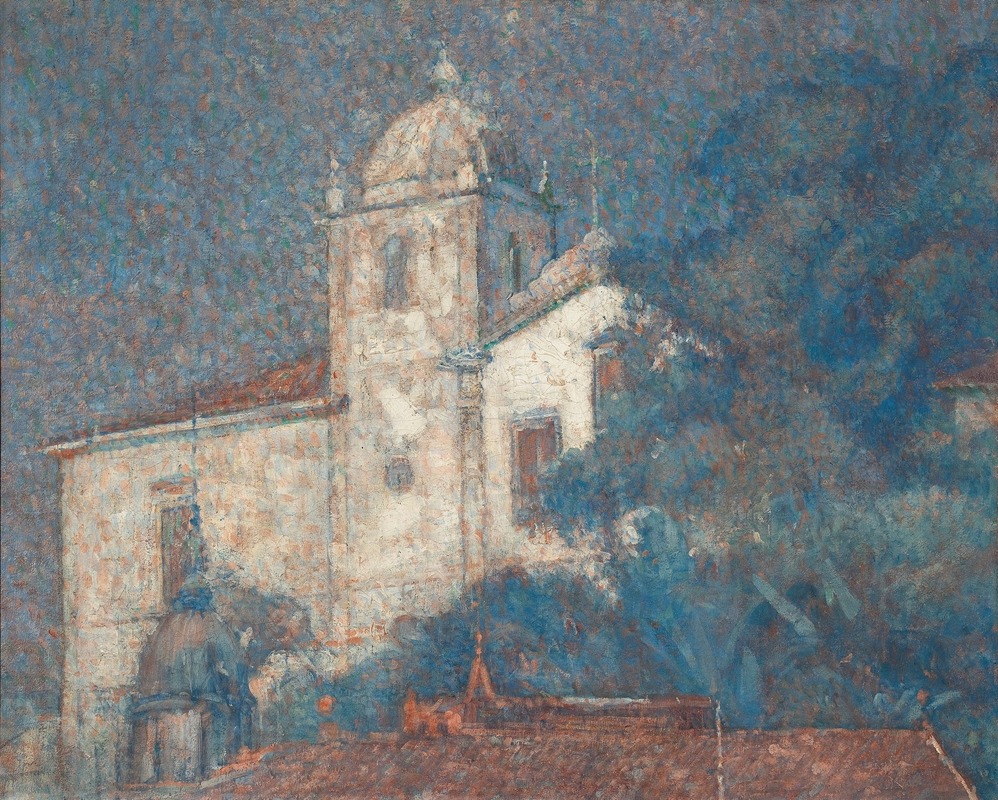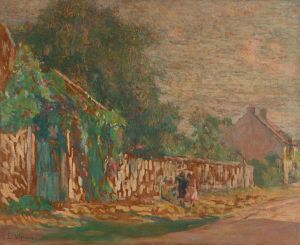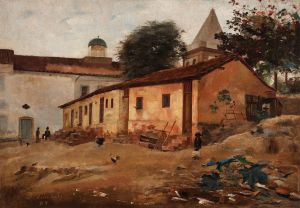
Igreja de Santa Teresa
A hand-painted replica of Eliseu Visconti’s masterpiece Igreja de Santa Teresa, meticulously crafted by professional artists to capture the true essence of the original. Each piece is created with museum-quality canvas and rare mineral pigments, carefully painted by experienced artists with delicate brushstrokes and rich, layered colors to perfectly recreate the texture of the original artwork. Unlike machine-printed reproductions, this hand-painted version brings the painting to life, infused with the artist’s emotions and skill in every stroke. Whether for personal collection or home decoration, it instantly elevates the artistic atmosphere of any space.
Eliseu Visconti, a prominent Brazilian artist, painted "Igreja de Santa Teresa" (Church of Saint Teresa) as part of his extensive body of work that contributed to the development of modern art in Brazil. Born in 1866 in Salerno, Italy, Visconti immigrated to Brazil at a young age and became one of the most influential figures in Brazilian art during the late 19th and early 20th centuries. His works often reflect a blend of European artistic traditions and Brazilian cultural elements, showcasing his versatility across various styles, including Impressionism, Symbolism, and Art Nouveau.
"Igreja de Santa Teresa" is a depiction of the Church of Saint Teresa, a notable landmark in Rio de Janeiro, Brazil. The church, located in the historic Santa Teresa neighborhood, is known for its colonial architecture and cultural significance. Visconti's painting captures the essence of the church and its surroundings, employing his characteristic use of light and color to create a vivid and atmospheric representation. The artwork demonstrates his mastery of Impressionist techniques, with loose brushstrokes and a focus on the interplay of light and shadow.
The exact date of the painting is not definitively documented, but it is believed to have been created during Visconti's mature period, when he was actively producing works inspired by Brazilian landscapes and urban scenes. During this time, Visconti was deeply engaged in exploring themes of national identity and the beauty of Brazil's natural and architectural heritage. His ability to merge European artistic influences with a distinctly Brazilian perspective is evident in this piece.
"Igreja de Santa Teresa" is part of Visconti's broader contribution to Brazilian art, which includes not only paintings but also decorative arts, theater set designs, and public murals. He was a pioneer in introducing modern artistic movements to Brazil and played a significant role in shaping the country's cultural landscape. His works are celebrated for their technical excellence and their ability to convey a sense of place and emotion.
The painting is currently housed in a private collection, and its public exhibitions have been limited. As a result, detailed information about the artwork's provenance and history remains scarce. However, it continues to be recognized as an important example of Visconti's artistic legacy and his dedication to portraying the beauty of Brazil.
This concise overview is based on available historical records and avoids speculative interpretations. Further research may provide additional insights into the painting's context and significance.


















